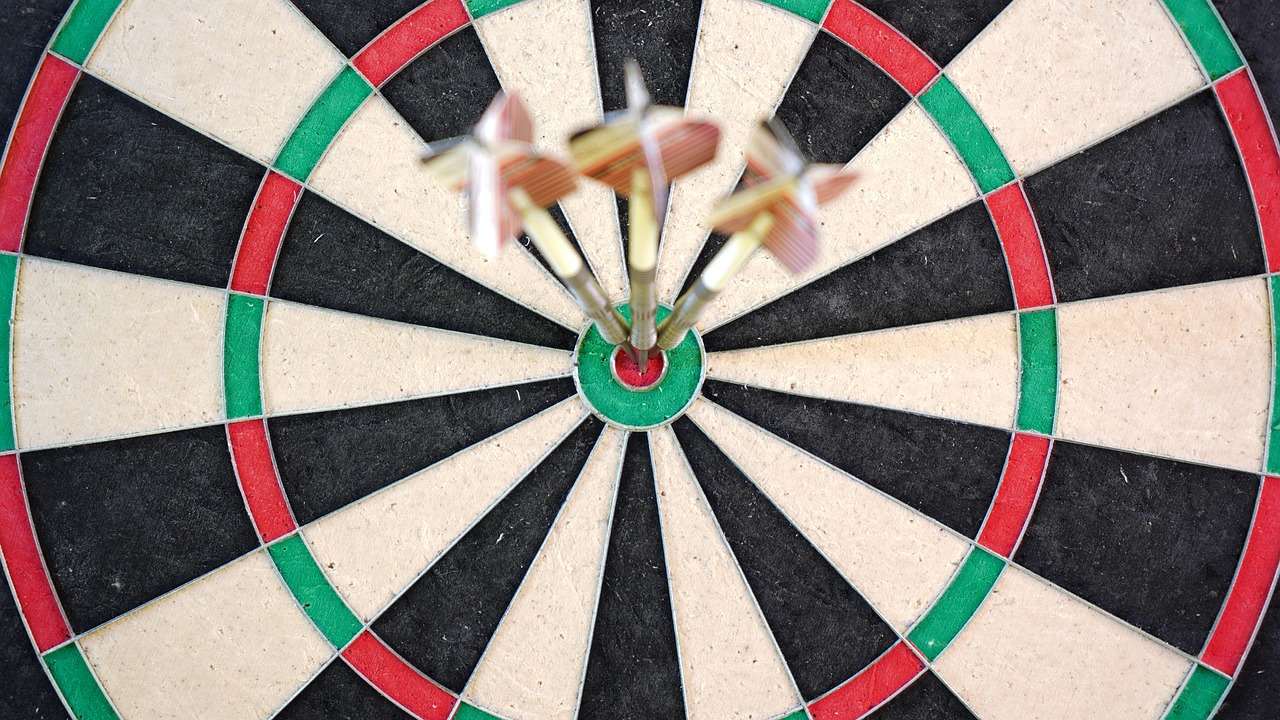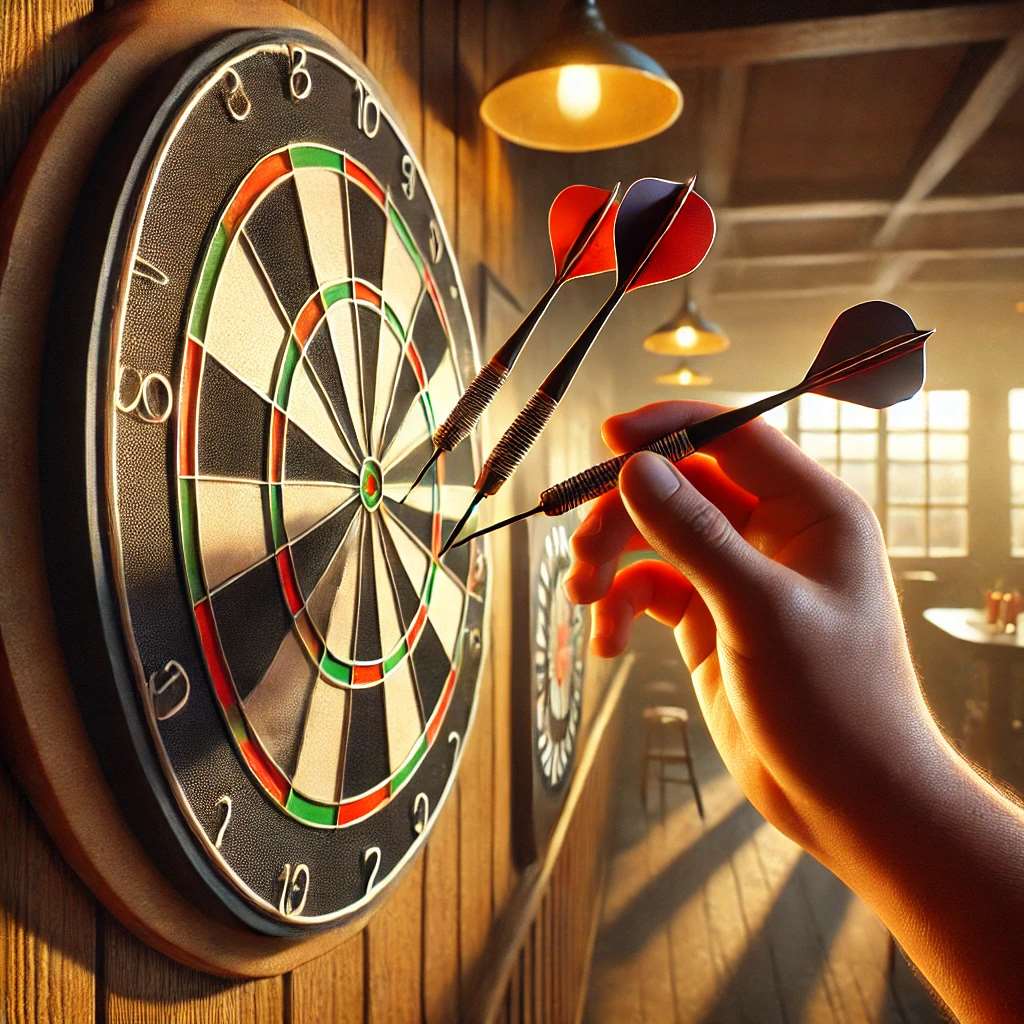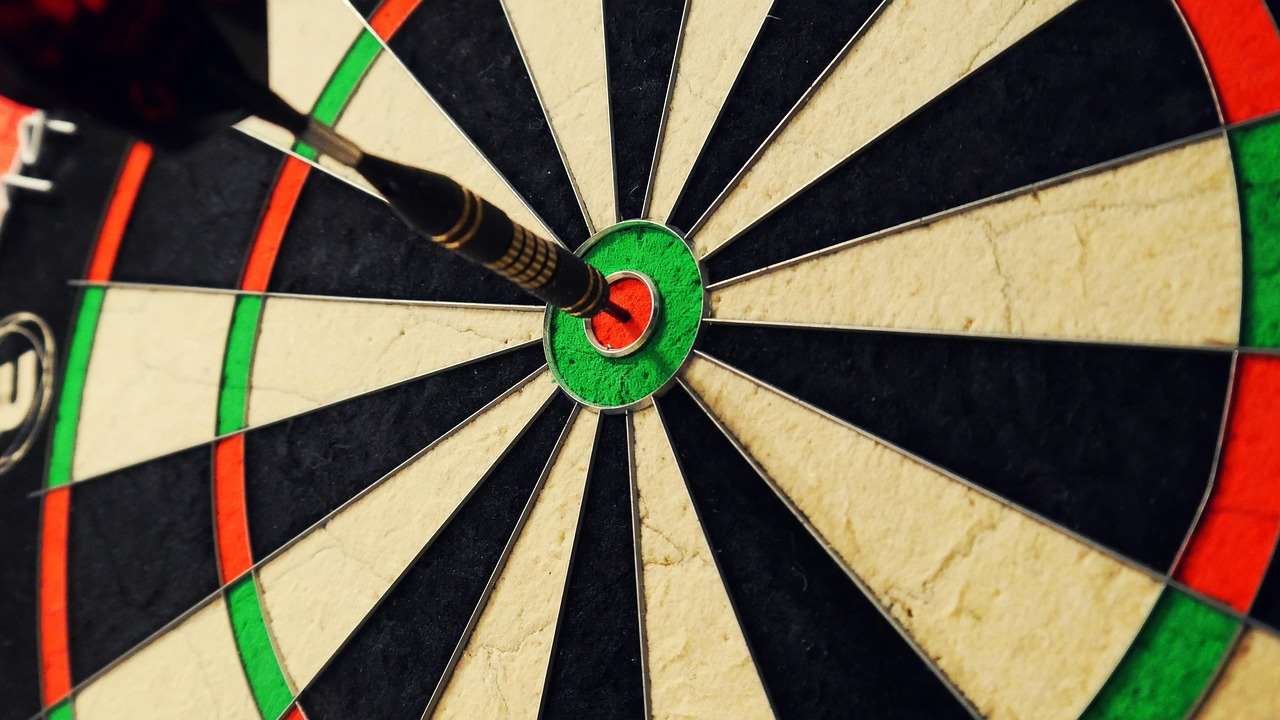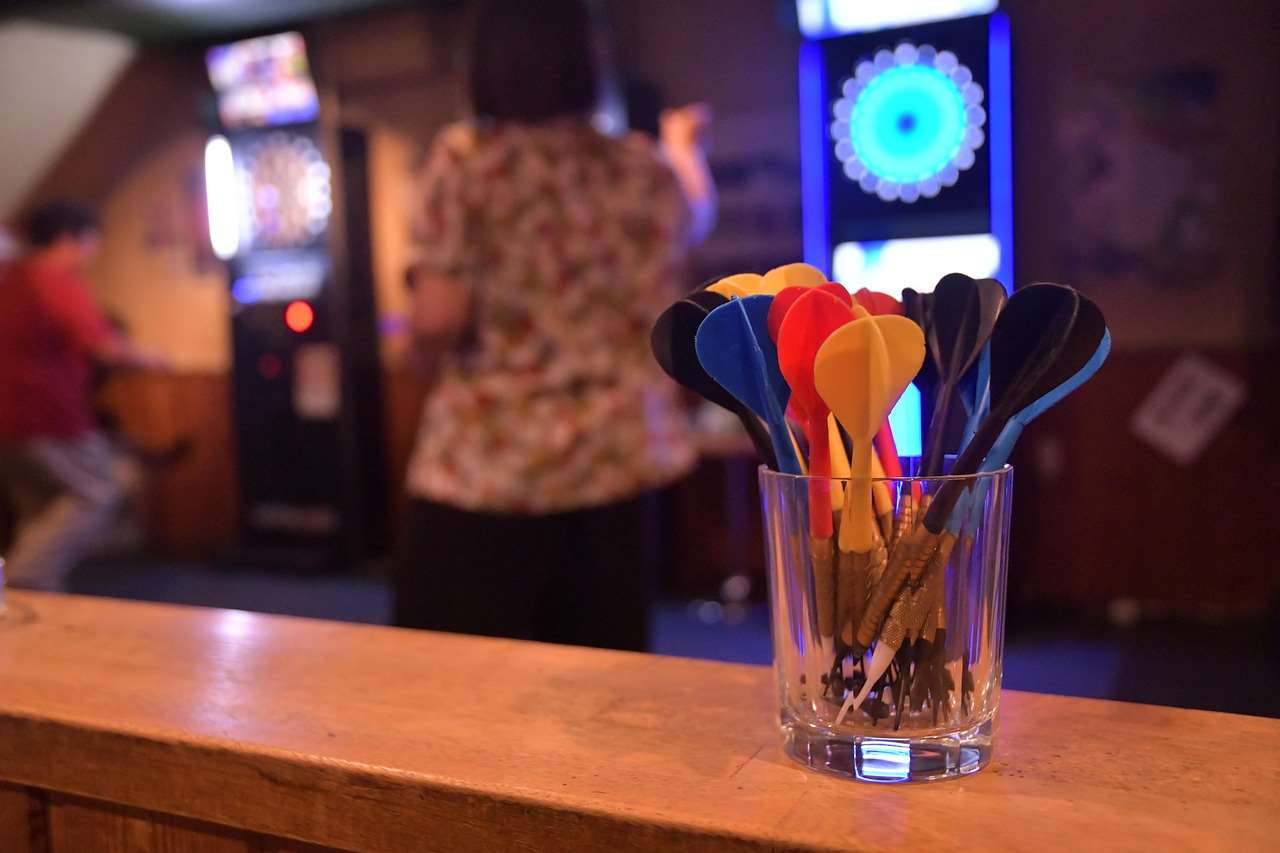Customizing darts for specific weight is all about fine-tuning your equipment for optimal performance, allowing you to achieve better accuracy and consistency. This article will explore the various ways you can adjust your darts’ weight, from adding weight to using different components, giving you the knowledge to personalize your setup and elevate your game. You’ll learn about adding weight strategically, experimenting with different shafts and flights, and understanding how these changes impact your dart’s flight path.
⚠️ Still Using Pen & Paper (or a Chalkboard)?! ⚠️
Step into the future! The Dart Counter App handles all the scoring, suggests checkouts, and tracks your stats automatically. It's easier than you think!
Try the Smart Dart Counter App FREE!Ready for an upgrade? Click above!
Understanding Dart Weight and Its Impact
The weight of a dart is a crucial factor that significantly influences its trajectory and stability. Generally, heavier darts tend to be more stable in flight, making them less susceptible to minor imperfections in your throw. However, they require more force to throw accurately and can be tiring over extended periods. Lighter darts, on the other hand, demand a more precise throw but may be easier to control for some players. Finding the right balance is key, and experimentation is essential.
Standard dart weights typically range from 16 to 30 grams. The ideal weight often depends on individual preferences, throwing style, and grip. There’s no one-size-fits-all solution; what works for a professional might not be suitable for a beginner. Factors such as your arm strength, throwing motion, and desired trajectory all play a role in determining the optimal dart weight for you. Some players might find that a lighter dart helps them with accuracy, while others might prefer the stability of a heavier one.

Methods for Customizing Darts For Specific Weight
Several methods can be employed to **customize darts for specific weight**, ranging from simple adjustments to more advanced modifications. Here are some of the most common techniques:
- Adding Weight to the Barrel: This is perhaps the most direct method. You can use specialized weight adders, such as small lead or tungsten weights that fit into the front or back of the barrel. These are available in various weights, allowing for fine-tuning.
- Changing the Shaft: Shafts come in different materials (aluminum, nylon, carbon fiber) and lengths. Switching to a heavier or lighter shaft can subtly alter the overall weight and balance of the dart. A longer shaft will also shift the center of gravity further back, potentially influencing flight characteristics.
- Altering the Flights: Flights affect the aerodynamic properties of the dart. While they don’t contribute significantly to the overall weight, using thicker or more durable flights can add a marginal amount, enough to make a noticeable difference to some players. Experimenting with different flight shapes and sizes is also crucial for stability and trajectory.
- Using Conversion Points: For soft-tip dart players who also play steel-tip, conversion points can be used to adjust the weight and feel of soft-tip darts to more closely resemble steel-tip darts.
Remember to **adjust weights in small increments**. Even a tenth of a gram can make a noticeable difference in how the dart flies. Keep detailed notes of each adjustment and its effect on your throwing performance.
Adding Weight Strategically
The location where you add weight to the dart can have a significant impact on its flight. Adding weight to the front of the dart tends to make it fly straighter and penetrate the board more easily. This is because a front-weighted dart is less likely to wobble in flight. Conversely, adding weight to the back of the dart can make it more forgiving of minor errors in your throw, as it will tend to self-correct more easily.
Consider these points when adding weight:
- Front-weighted darts: Ideal for players with a consistent and powerful throw.
- Rear-weighted darts: Suitable for players who prioritize forgiveness and control.
- Center-weighted darts: Offer a balance between stability and maneuverability.
It’s essential to consider your own style and preferences when choosing where to add weight. There’s no right or wrong answer; the best approach is the one that yields the best results for you.

Choosing the Right Shafts and Flights
Beyond adding weight directly, changing the shafts and flights can also greatly influence the feel and performance of your darts. The shaft affects the dart’s balance and center of gravity, while the flights determine its aerodynamic properties.
Shaft Materials and Lengths
Shafts are typically made from nylon, aluminum, or carbon fiber. Nylon shafts are lightweight and flexible, offering good grip and shock absorption. Aluminum shafts are more durable and provide a more solid feel, while carbon fiber shafts offer a good balance of weight and strength. The length of the shaft also affects the dart’s flight. Shorter shafts tend to make the dart fly faster and straighter, while longer shafts provide more stability. Experimenting with different shaft lengths can help you fine-tune your dart’s trajectory.
Flight Shapes and Sizes
Flights come in a variety of shapes and sizes, each affecting the dart’s aerodynamics differently. Standard flights are the most common type, offering a good balance of stability and lift. Slim flights provide less drag and are suitable for players with a strong, accurate throw. Kite flights offer a good compromise between standard and slim flights. Larger flights provide more stability and are often preferred by beginners or players who have trouble with their darts wobbling in flight. The material and thickness of the flight can also play a role, with thicker flights providing more durability and a slightly different flight characteristic. Consider the quality comparison of dart sets when choosing flights.

Fine-Tuning Your Dart Setup
Once you’ve made some initial adjustments to your dart’s weight and components, it’s time to fine-tune your setup. This involves carefully observing how your darts fly and making incremental changes to optimize their performance. Remember, **consistency is key**.
- Practice Regularly: Dedicate time to practice and throw your darts consistently to get a feel for how they are performing with the new adjustments.
- Observe Dart Flight: Watch how your darts fly through the air. Are they wobbling? Are they landing at the angle you want? Observing this can provide clues to weight and/or components adjustments.
- Adjust in Small Increments: Don’t make drastic changes. Adjust weight or components in small increments to measure each adjustment’s impact.
- Keep Detailed Records: Keep a notebook to record the darts setup specifics and your observations. This will provide great data for finding that perfect dart setup.
- Be Patient: Don’t get discouraged if you don’t see immediate results. Finding the perfect dart setup takes time and experimentation.
Focus on making small, incremental adjustments and carefully evaluating the impact of each change. This iterative process will eventually lead you to a dart setup that perfectly complements your throwing style.
Related Considerations: Grip and Stance
While customizing darts for specific weight and components is essential, remember that your grip and stance play equally important roles. A consistent grip is crucial for repeatable throws. Experiment with different grip positions and pressures to find what feels most natural and comfortable for you. Your stance should be stable and balanced, allowing you to transfer your weight smoothly during the throw. Proper foot placement and body alignment are also crucial. Consider consulting with experienced players or coaches for personalized advice on grip and stance techniques.

The Mental Aspect of Dart Customization
Beyond the technical aspects of **dart customization**, there’s a significant mental component to consider. The confidence that comes from knowing you’re using equipment that’s perfectly tailored to your needs can have a profound impact on your performance. However, it’s crucial to avoid getting too caught up in the pursuit of perfection. Remember that even the best equipment won’t compensate for a lack of practice or mental focus. Find a balance between optimizing your equipment and developing your skills and mental game. Focus on the areas where you can improve, and you will notice a marked difference in your scores. Think about investing in premium dart equipment for long-term value.
Maintenance and Care
Once you’ve dialed in your perfect dart setup, it’s important to maintain your equipment properly to ensure consistent performance. Regularly clean your dart barrels with a soft cloth to remove dirt and grime. Check your shafts and flights for signs of wear and tear, and replace them as needed. Periodically tighten the points to prevent them from loosening. By taking good care of your darts, you can extend their lifespan and maintain their performance over time.

Conclusion
Customizing darts for specific weight is a rewarding process that can significantly enhance your dart-playing experience. By understanding the impact of weight on dart flight, experimenting with different components, and fine-tuning your setup, you can create a set of darts that perfectly complements your throwing style and helps you achieve your full potential. Remember that the key is to experiment, observe, and make incremental adjustments until you find the perfect balance for you. Take the time to choose best dart equipment for lasting value. So, grab your darts, start experimenting, and enjoy the journey of finding your perfect setup! Happy darting!
Hi, I’m Dieter, and I created Dartcounter (Dartcounterapp.com). My motivation wasn’t being a darts expert – quite the opposite! When I first started playing, I loved the game but found keeping accurate scores and tracking stats difficult and distracting.
I figured I couldn’t be the only one struggling with this. So, I decided to build a solution: an easy-to-use application that everyone, no matter their experience level, could use to manage scoring effortlessly.
My goal for Dartcounter was simple: let the app handle the numbers – the scoring, the averages, the stats, even checkout suggestions – so players could focus purely on their throw and enjoying the game. It began as a way to solve my own beginner’s problem, and I’m thrilled it has grown into a helpful tool for the wider darts community.